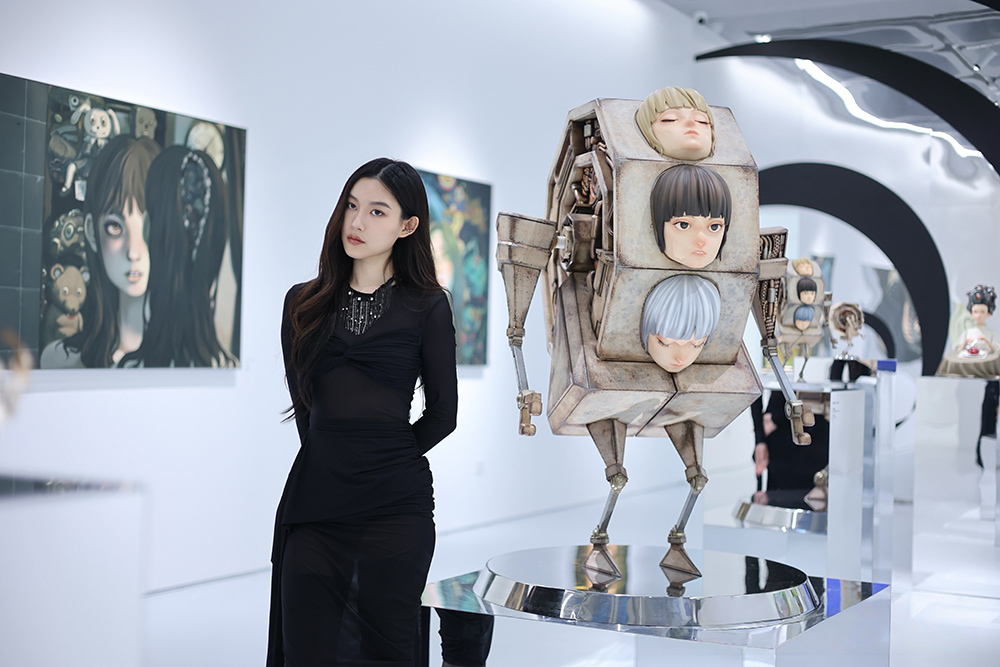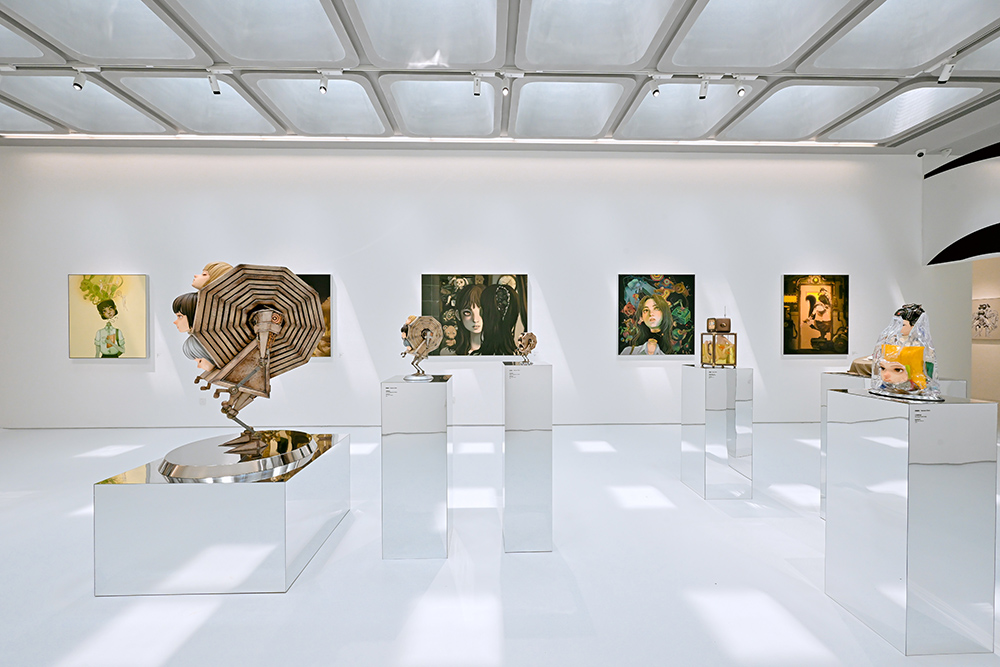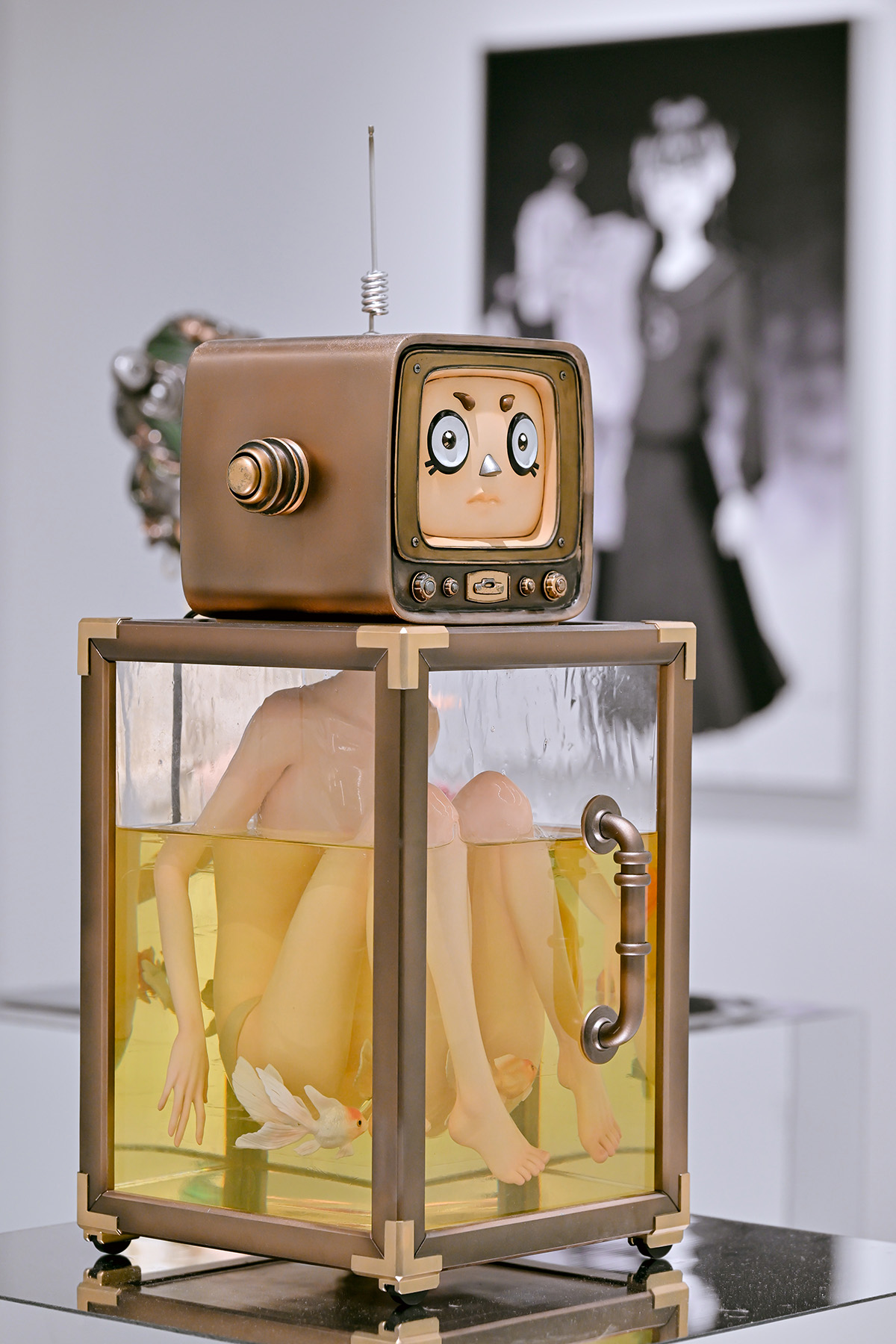Sometimes, the most telling visions of our era don’t announce themselves in grand gestures — they blink softly from behind tempered glass, lacquered in baby pink, silicone-smooth and screen-ready. Yanran Chen’s Neon Dreamland, her first solo exhibition in China, isn’t a debut — it’s a simulation of one. Hosted in the new immersive art space ART FOCUS, nestled in Beijing’s 798 Art District like a glowing node in the city’s nervous system, the show feels less like stepping into a gallery and more like logging into someone else’s subconscious — someone raised on anime, speculative fiction, and the ambient dread of being terminally online.
Chen, born in 2005, doesn’t make work that suggests influence — her sculptures, installations, and illustrated avatars breathe the language of the posthuman without needing translation. She doesn’t channel the digital age — she excretes it. The exhibition opens with her personal work — The Mechanical Lifeform, Dinner, pieces that first turned heads at ComplexCon LA, though even that setting now feels quaint compared to the eerily calm, ultra-designed zone in which they’re currently housed. These works don’t explain themselves — they glisten. A fork, maybe, or a vaguely humanoid torso, all curves and chrome and impossible softness, hovers under white lights like a sentient gadget that never got past prototype. They’re beautiful in the way a rendered apple in an ad might be beautiful — smooth enough to resist touch, clean enough to distrust.
Everything is suspended in a dream logic that isn’t quite dreamlike — more like a lucid hallucination curated by a marketing algorithm. The colours buzz — not garish, but insistently saturated, like an overexposed emotion. Pink, blue, green — not pastel but hyperreal, the palette of a world built for likes. And through it all there’s an absence — not silence, exactly, but a vacuum where moral certainty might once have lived. The bodies — if they are bodies — are often unfinished, or mutated, or decorative. The question isn’t what happened to them, but whether they were ever whole to begin with.
The exhibition then shifts — or rather, mutates. The second zone, a collaboration with WaarWorld based on Liu Cixin’s The Supernova Era, introduces the Players Series, a suite of collectible character sculptures and their chibi “Q-version” companions. It’s not a critique of commercialisation — it’s the aestheticisation of it. These figures don’t just sit still — they pose. Engineered to seduce, to be bought, to be posted. They are not avatars of a future — they are the decorative remnants of a future already lost. Their cuteness is clinical, their blank stares more uncanny than empty. One gets the sense they’d smile, if they could find a reason.
Here the space becomes more theatrical — fog machines, ambient drones, pulsing lights that seem more intelligent than necessary. One sculpture appears mid-transformation, its limbs somewhere between mecha and mollusk. Another stands triumphant, though over what is unclear. It feels like watching the trailer for a show that never aired — slick, evocative, vaguely mournful. Every surface polished, every emotion proxied.
ART FOCUS, the venue itself, is complicit in this sense of synthetic immersion. It’s not a space built for paintings or bronze — it’s an interface, an update. Rooms curve subtly. Screens flicker. The air hums as though always anticipating something just about to load. There’s talk of interactivity and outreach, but the real interaction here is internal — a quiet negotiation between nostalgia, repulsion, and awe.
And then there’s Chen. At twenty, she already moves with the fluency of a brand. Collaborations with GUCCI and Balenciaga, her own studio ACCRO (French for “addicted” or “hooked”) — not an artist in the traditional sense, but a content engine that breathes art. Her practice doesn’t gesture towards the digital — it is digital, even when it’s made from resin or steel. Her figures don’t speak — they load.
There’s something unresolvable at the core of Neon Dreamland — a sweetness that doesn’t satisfy, a horror that’s too smooth to be feared. It doesn’t ask what it means to be human — it assumes you’ve already forgotten. And maybe that’s the point. This isn’t art for contemplation — it’s art for a generation who feels most alive when half-dissociating in front of something beautiful.
You leave Neon Dreamland with a sense that you’ve been entertained, maybe even moved — though it’s hard to say by what. The feeling is like waking from a dream you can’t remember, but keep thinking about anyway. A world where bodies are toys, emotions are effects, and the only thing real is the sheen.
If this is the future, it’s already been merchandised — and it’s stunning.



